| |
|
In Firenze zijn er tal van fresco's met als thema het Laatste Avondmaal, ook wel Cenacoli genoemd, die vanwege hun aantal en rijkdom een soort pictorale geschiedenis van de Florentijnse schilderkunst vertegenwoordigen.
De refters die zijn beschilderd met het Laatste Avondmaal behoren tot de meest interessante artistieke monumenten in Firenze. Muurschilderingen in een refectorium of refter, eetzaal of cenaculum, hadden vaak voedsel als onderwerp. Het meest gebruikelijke tafereel was het Laatste Avondmaal. Een schilderij van het Laatste Avondmaal werd dan ook vaak een cenaculum of cenacolo genoemd naar de plaats waar het zich bevond.
Het beroemdste Laatste Avondmaal is van Leonardo Da Vinci en staat in het Italiaans bekend als Il Cenacolo, Cenacolo Vinciano of L'Ultima Cena [2].
Naast de voor de hand liggende connectie met de maaltijd, werd het Laatste Avondmaal vaak in het refettorio of refter van het kloster geschilderd om meditatie en gebed te stimuleren.
Wandel met ons mee langs de mooiste, nog bijna onontdekte fresco's van het Laatste Avondmaal of cenacolo, die in Firenze te zien zijn.
Er zijn niet minder dan zeven fresco's van het Laatste Avondmaal binnen de grenzen van het oude stadscentrum. Van Santa Maria Novella in het noordwestelijke deel van de stad, tot Ognissanti in het stadscentrum en Santa Croce en San Salvi in het oosten. Deze uitzonderlijke verzameling van fresco's overspant enkele eeuwen. Het oudste cenacolo vinden we terug in Santa Croce.
Taddeo Gaddi's 14e-eeuwse Laatste Avondmaal
|
 |
Taddeo Gaddi, Cenacolo, Basilica di Santa Croce, Firenze, het oudste Laatste Avondmaal in Firenze
|
De scène van het Laatste Avondmaal was een echte Florentijnse traditie die in vele kloosters van de stad voorkwam. In de voormalige refter van het Franciscaner klooster van Santa Croce schilderde Taddeo Gaddi, onder de grote Levensboom, zijn Laatste Avondmaal.
|
| |
De cenacolo is een schilderij van het Laatste Avondmaal dat de refters versiert in kloosters. Gedurende de 14e eeuw werd het onderwerp van het Laatste Avondmaal opgenomen in de cycli van fresco's die het leven en de passie van Christus illustreerden. Tijdens de 15e eeuw, met de uitvinding van het perspectief, werd het avondmaal onafhankelijk weergegeven op een volledige muur.
Afgezien van de Cenacolo di San Salvi, volgen alle Florentijnse cenacoli hetzelfde picturale schema, met Jezus tussen Petrus en Johannes, terwijl Judas apart wordt weergegeven. In die van Ognissanti en San Marco bewonderen we de heldere, zuiverekleuren van Domenico Ghirlandaio, in de voormalige triomf van het licht "di Fuligno" Perugino. Het Laatste Avondmaal geschilderd in het klooster van Calza door Franciabigio toont duidelijk de invloed van Leonardo da Vinci, terwijl het grandioze fresco van Andrea del Sarto in San Salvi de monumentaliteit heeft die we associëren met Michelangelo.
Domenico Ghirlandaio schilderde het toneel van het Laatste Avondmaal in een paar jaar tijd verschillende keren. Er zijn nog drie werken van zijn Laatste Avondmaal: in de abdij van Passignano sul Trasimeno, in de Ognissanti in Firenze en in de San Marco, Firenze.
In de Basilica di Santa Maria Novella vind je het Laatste Avondmaal van Alessandro Allori (de leerling van de grote portretschilder Bronzino). Afgezien van het Laatste Avondmaal en de fresco's van Paolo Uccello in het Groene Klooster, vind je ook een aantal prachtige middeleeuwse fresco's in de Spaanse kapel, toegankelijk via het klooster.
Het Laatste Avondmaal van Pietro Perugino werd begin 1490 geschilderd voor de refter van het Fuligno-klooster, dat gebruikt werd door een groep Fransiscaanse monniken uit Umbrië.
In de refter van Sant'Apollonia vinden we de dramatische, rigoureuze perspectiefversie van Andrea del Castagno. Het fresco van Andrea del Castagno langs de noordmuur van de refter, het Laatste Avondmaal met de drie passiescènes van de kruisiging, de graflegging en de opstanding hierboven, werd voltooid tussen juli en begin december 1447.
Tenslotte werd in het antieke klooster van Vallombrosiani, verbonden aan de kerk van San Michele a San Salvi, het Museum van het Laatste Avondmaal van Andrea del Sarto gebouwd. De levendige weergave van Andrea Del Sarto van Het Laatste Avondmaal, geschilderd tussen 1511 en 1527, is misschien wel de beroemdste cenacolo (of Laatste Avondmaal) in Firenze. Het fresco, gehuisvest in de oude refter van de Vallambrosan-abdij (nu een museum), verbonden aan de kerk van San Michele a San Salvi, overleefde de grote belegering van Firenze in 1530 en leed alleen onder grote schade door overstromingen in de jaren zestig '.
Het ex-ziekenhuis van Sant'Onofrio dei Tintori (via Tripoli 4-6) bewaart een Laatste Avonmaal van Niccolò Lapi (1725). Dat is het laatste cenacolo van Firenze.
1 - Santa Croce: Taddeo Gaddi (1336-1366 circa) - Bezoek is betalend, je koopt een ticket voor het volledige complex van Santa Croce
2 - Santo Spirito, Fondazione Salvatore Romano, Orcagna (1365)
3 - Sant'Apollonia: Andrea del Castagno (1445-50)
4 - Ognissanti: Domenico Ghirlandaio (1480-1482)
5 - Fuligno: Pietro Perugino (1495)
6 - San Salvi: Andrea del Sarto (1519-27)
7 - Convitto della Calza by Franciabigio (1514)
8 - Santa Croce, Giorgio Vasari (1546).
9 - Santa Spirito, Refettorio, Bernardino Poccetti (1597)
10 Sant'Apollonia, Comunicatoio, Bernardino Poccetti
11.
12. Museum of Santa Maria Novella, Alessandro Allori, Last Supper, 1584
Santa Croce, Giorgio Vasari (1546).
Spedale di Sant'Onofrio dei Tintori, Niccolò Lapi (1725).
1 - Santa Croce: Taddeo Gaddi (1336-1366 circa)
|
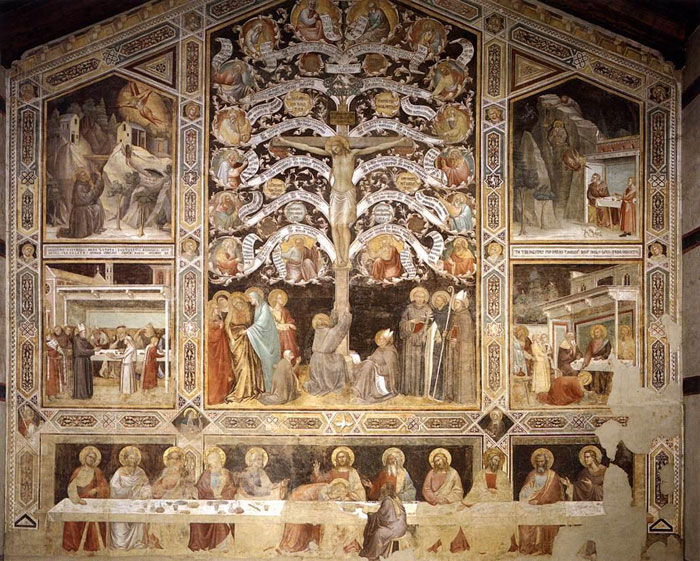 |
Taddeo Gaddi, Last Supper, Tree of Life and Four Miracle Scenes, 1360s, Fresco, 1120 x 1170 cm, Santa Croce, Firenze
|
Het Laatste Avondmaal in de Santa Croce-kerk is het oudste van alle Florentijnse Laatste Avondmaal-fresco's. Het fresco werd geschilderd door Taddeo Gaddi in 1340. Het is de eerste Laatste Avondmaalscène waarin je Judas aan de andere kant van de tafel afgebeeld ziet, een symbool van zijn verraad en een manier om hem onmiddellijk te laten opvallen in de groep apostelen. Deze traditie om Judas op deze manier te tonen wordt alleen doorbroken door da Vinci in Milaan en enkele 16e-eeuwse versies.
Dit fresco heeft eenzelfde compositie als het fresco in Santo Spirito.
De overstroming van 1966
Tijdens de nacht van vrijdag 4 november 1966, na een uitzonderlijke golf van slecht weer, overstroomde de Arno grote delen van Firenze, zowel het historische centrum als verschillende voorsteden. Het Santa Croce Museum, waarin het water een hoogte van vijf meter en twee centimeter had bereikt, werd beschreven als 'het epicentrum van de ramp'. Door de schade die werd veroorzaakt door de overstroming moest het enorme fresco worden verwijderd. Dit werd in oktober 1967 uitgevoerd in een van de meest gedurfde operaties in de geschiedenis van de restauratie. Het fresco werd in december 1968 weer teruggeplaatst.
Ook het Laatste Avondmaal van Giorgio Vasari werd tijdens de overstroming zwaar beschadigd.
Adres Piazza di Santa Croce, 16, 50122 Firenze | www.santacroceopera.it
Openingsuren
Santa Croce is een Monumentaam museumcomplex en omvat de kathedraal, Cappella Pazzi, il Museo dell’Opera, drie cloistro's en het Cenacolo. ,Bezoek is betalend, je koopt een ticket voor het volledige complex van Santa Croce. Je kan hier een ticket reserveren en betalen.
In de Santa Croce liggen o.a. Michelangelo, Vasari, Galileo Galilei en Leon Battista Alberti begraven. In de Cappella Maggiore kan je de frescocyclus La Leggenda della Vera Croce, bewonderen die geschilderd werd door Agnolo Gadi, zoon van Taddeo Gaddi.
Het Laatste Avondmaal van Taddeo Gaddi bevindt zich in het Refettorio van Santa Croce. Bekijk er ook de bewaarde fragmenten van een Laatste oordeel van Andrea Orcagna, die ook het volgende Cenacolo schilderde in het voormalige refettorio van Santo Spirito.
|
| |
2. Santo Spirito (Fondazione Salvatore Romano), Andrea Orcagna (1365)
|
 |
Andrea Orcagna, Cenacolo, Santo Spirito (Fondazione Salvatore Romano) (1365)
|
Net als in het fresco in Santa Croce is het laatste Avondmaal deel van een wandvullend fresco, met een prachtige kruisiging als centrale onderwerp.
Aan het einde van de negentiende eeuw werd de ruimte van dit cenacolo nog gebruikt als tramremise. De toegangspoort voor deze remise vernietigde het grootste deel van het Laatste avondmaal van Andrea Orcagna. Rechts zien we nog twee figuren, en een toekijkende augustijn.
Onder deze Kruisiging zijn maar een paar fragmenten bewaard van het laatste avondmaal. Aan de rechterkant schilderde Orcagna met veel expressie twee apostelen ( Thomas, met een welsprekend gebaar van twijfel, en nog een andere monnik) en in een nis, een monnik van de Orde van de Augustijnen.
Andrea Orcagna | Santo Spirito | 9:30 – 12:30, 4-5:30; closed on Wednesday
Fondazione Salvatore Romano
|
|

Andrea Orcagna, Crocifissione e ultima cena, Santo Spirito (Fondazione Salvatore Romano)
|
| Het is de oude refter van het Augustijner klooster, bestaande uit een grote zaal bedekt met spanten. De omgeving was een van de zeldzame overblijfselen van het middeleeuwse klooster na de vijftiende-eeuwse renovatie door Filippo Brunelleschi, maar de waarde van deze omgeving werd pas relatief recent erkend: aan het einde van de negentiende eeuw werd het gebruikt als tramremise en bij deze gelegenheid werd het open de muur op het plein en vernietig het laatste avondmaal van Andrea Orcagna.
Boven het fragmentarische Laatste Avondmaal blijft echter een grote kruisiging over, die dateert uit de jaren tussen 1360 en 1365.
De grote zaal toont de collectie sculpturen uit de 11e tot de 15e eeuw die door de antiquair Salvatore Romano aan de stad werd geschonken door de gelijknamige stichting die het kleine museum in samenwerking met het gemeentelijk bestuur beheert. De collectie bevat twee bas-reliëfs die aan Donatello worden toegeschreven, uit Padua (San Massimo en San Prosdocimo), het hoge reliëf van de Madonna met het kind van Jacopo della Quercia en twee marmeren sculpturen (een kariatide en een aanbiddende engel) van Tino da Camaino die dateren uit de tijd tot de periode tussen 1320 en 1322. Er zijn ook vrijstaande fresco's en meubels uit de zestiende en zeventiende eeuw.
|
|

Andrea Orcagna, Cenacolo, Santo Spirito (Fondazione Salvatore Romano) |
Adres: Fondazione Salvatore Romano, Piazza Santo Spirito 29 | Website: Fondazione Romano
Openingsuren: zaterdag en maandag van 10.00 - 17.0 uur0; zondag van 13.00 - 17.00 uur
|
3. Cenacolo di Sant'Apollonia, Andrea del Castagno, Last Supper, 1447
|
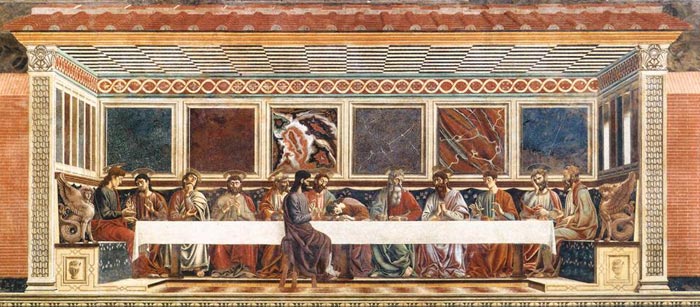 |
Andrea del Castagno, Last Supper, 1447, fresco, Sant'Apollonia, Firenze
|
In 1447 werkte Andrea del Castagno in de refter van Sant'Apollonia en schilderde in het onderste gedeelte het fresco van het Laatste Avondmaal, vergezeld van andere scènes die de Afzetting, Wederopstanding en Kruisiging uitbeelden, die nu beschadigd zijn. Hij schilderde ook een lunet in de kloostergang met een Pietà.
Het detail en naturalisme van del Castagno's Laatste Avondmaal laten zien hoe del Castagno afweek van eerdere artistieke stijlen. Het is waarschijnlijk dat Leonardo da Vinci al bekend was met dit werk voordat hij zijn eigen Laatste Avondmaal schilderde in een meer dramatische vorm om te contrasteren met de stilte van deze werken, zodat er meer emotie zou worden weergegeven.
Adres: Saint Apollonia Last Supper, Via 27 Aprile, 1, 50129 Firenze
Openingsuren : Monday – Sunday 8:15-1:50; closed 2nd, 4th Mondays and 1st, 3rd, 5th Sundays
|
4. Chiesa di Ognissanti | Het Laatste Avondmaal van Domenice Ghirlandaio
|

|
| |
Ghirlandaio schilderde de scène van het Laatste Avondmaal meerdere keren in een paar jaar tijd. Het vroegste voorbeeld van het Laatste Avondmaal werd in 1476 geschilderd door de kunstenaar in de abdij van San Michele Arcangelo a Passignano (in Tavernelle Val di Pesa, vlakbij Firenze). Deze is sterk beïnvloed door Andrea del Castagno.
In de scènes van het Laatste Avondmaal in Ognissanti en San Marco bewonderen we de heldere, strakke kleuren van Domenico Ghirlandaio. In 1480 schilderde Ghirlandaio de 'Heilige Hiëronymus in zijn studeerkamer' en andere fresco's in de kerk van Ognissanti, Florence, en een levensgroot Laatste Avondmaal in de refter.
Het vroegste voorbeeld van het Laatste Avondmaal werd in 1476 door Ghirlandaio geschilderd in de abdij van San Michele Arcangelo a Passignano (in Tavernelle Val di Pesa), terwijl de laatst overgebleven versie van Ghirlandaio's Laatste Avondmaal zich in de refter van de herberg van het San Marco klooster bevindt.
|
The church of Ognissanti De kerk van Ognissanti maakte deel uit van het kloostercomplex dat in 1251 werd gesticht door de Umiliati, die in 1239 vanuit Lombardije naar Florence waren gekomen. In de 15e eeuw werkten zowel Botticelli, die in de kerk vlakbij zijn geliefde Simonetta Vespucci begraven ligt, als Ghirlandaio in Ognissanti. Botticelli's fresco van de Heilige Augustinus in zijn Studeerkamer, balanceert Ghirlandaio's Heilige Jeroen in zijn Studeerkamer in de kapel tegenover de navel, beide uitgevoerd in 1480. Misschien wel de grootste van Ognissanti's fresco's is Ghirlandaio's Laatste Avondmaal in de refter. Voor de Vespucci werden Ghirlandaio's Laatste Avondmaal (1480) en de sinopia ervan gefresco's in de refter van het klooster, gelegen tussen de eerste en tweede kloostergang van het oude klooster. Ghirlandaio produceerde met dit fresco een van de beste voorbeelden van zijn kunst, dat een serene en toch dramatische episode van het Laatste Avondmaal voorstelt. De apostelen zijn geschilderd op het moment dat Jezus aankondigt dat een van hen hem zal verraden.
Adres: Borgo Ognissanti, 42, 50123 Firenze
Openingsuren :Monday, Wednesday, Saturday 9-12
|
4. San Marco Museum | Domenico Ghirlandaio, Laatste Avondmaal, 1486
|
De laatst overgebleven versie van Ghirlandaio's Laatste Avondmaal bevindt zich in de refter van de herberg van het San Marco klooster.
De basisopstelling is hetzelfde als die in het fresco van Andrea del Castagno in het Florentijnse Cenacolo di Sant'Apollonia uit ongeveer 1450.
|
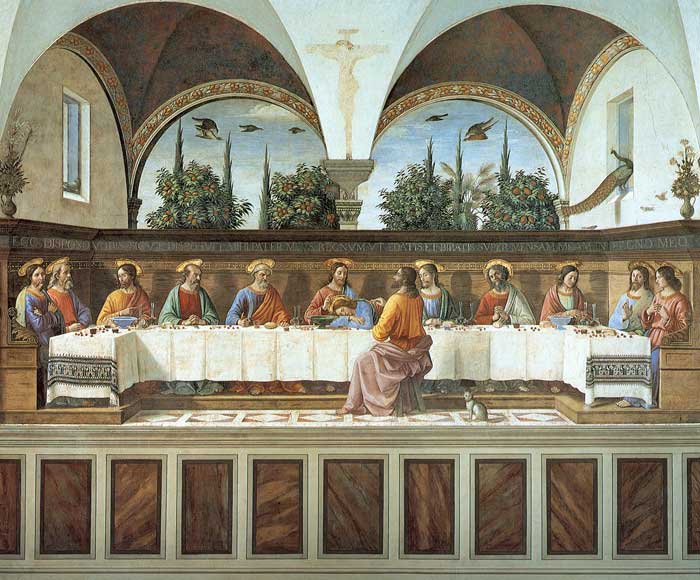 |
Ghirlandaio, Last Supper, c. 1486, fresco, 400 x 800 cm, San Marco, Firenze
|
De discipelen zitten aan een lange tafel voor een achterwand die evenwijdig loopt aan het beeldplan. Christus zit in het midden en zijn favoriete discipel Johannes leunt verdrietig tegen Hem aan. Rechts van Christus, op de ereplaats, zit de belangrijkste apostel, Petrus. Judas de verrader is de enige die van de anderen is gescheiden: hij zit voor de tafel.
Het fresco met “L'ultima Cena” (Het Laatste Avondmaal), onlangs gerestaureerd, bevindt zich in een gebied vlakbij de Foresteria (het gastenverblijf). Deze ruimte was ontworpen om de belangrijkste gasten te ontvangen in een aparte zaal van de Grote Refter, die gereserveerd was voor de broeders.
Domenico Ghirlandaio was op het hoogtepunt van zijn populariteit. Hij bereidde alleen het ontwerp voor. De rest van de uitvoering werd gedaan door zijn broer David en zijn leerling Sebastiano Mainardi.
Adres:
Openingsuren
De Kerk van San Marco is dagelijks geopend van 7.00 tot 12.00 uur en van 16.00 tot 20.00 uur.
Het Museum van San Marco is dagelijks geopend van 8.15 tot 13.50 uur.
Op zaterdag en zondag blijft het geopend tot 19.00 uur.
Het museum sluit op de tweede en vierde zondag en op de eerste, derde en vijfde maandag van de maand.
|
5. Cenacolo di Fuligno Museum, Pietro Perugino, The Last Supper, 1493-96
|
 |
Pietro Perugino, The Last Supper, 1493-96, fresco, 440 x 800 cm, Convent of the Tertiary Franciscans, Foligno
|
Het Cenacolo di Fuligno Museum is een piepklein museum dat zeker een bezoek waard is. Aanvankelijk werd het fresco toegeschreven aan Rafaël, maar nu wordt algemeen aangenomen dat het het werk is van Perugino, hoewel het grotendeels door zijn leerlingen is voltooid.
Zoals veel kerken in Florence werd het interieur in de 18e eeuw witgekalkt en dit prachtige fresco van Perugino werd pas in de 19e eeuw ontdekt en herontdekt. In 1845 legden arbeiders in een voormalig klooster een buitengewone plek bloot - een enorm, intact fresco van het Laatste Avondmaal in een voormalige refter. Aanvankelijk werd het toegeschreven aan Rafaël, die eigenlijk Perugino's leerling was. Het idee is ook geopperd dat het over een ander fresco met hetzelfde thema is geschilderd door Neri di Bicci (1419-1491).
De dinerende apostelen zijn afgebeeld tegen een landelijk landschap, waardoor het lijkt alsof je door een raam naar het harmonieuze tafereel kijkt.
Dit werk kan worden beschouwd als een van de belangrijkste voorbeelden van de Umbrische cultuur van de Renaissance, waarvan Perugino een van de meest serene en prachtige meesters was.
Adres: Via Faenza, 40, 50123 Firenze
Admission Free
Openingsuren: Blessed Angelina of Foligno | Tuesday, Thursday, Saturday 9-12
|
6. San Michele a San Salvi, Andrea del Sarto, Museo del Cenacolo di Andrea del Sarto
|
 |
Andrea del Sarto, Cenacolo di Andrea del Sarto , 1511-1527, affresco, 525 × 871 cm, Museo del Cenacolo di Andrea del Sarto, Firenze
|
Het Laatste Avondmaal van Andrea del Sarto in San Salvi, een verborgen juweel van een kerk aan de rand van Firenze, ligt op ongeveer 15 minuten lopen ten westen van de kerk Santa Croce.
San Salvi, ook bekend als San Michele a San Salvi, werd in de 11e eeuw gebouwd door de Vallombrosanen als onderdeel van een abdijcomplex. De refter bevat een meesterwerk fresco van het Laatste Avondmaal (1519-1527) door Andrea del Sarto. Zijn werk is een van de meest spectaculaire voorbeelden van het onderwerp en loopt gedeeltelijk vooruit op de barokke stijl door de sterk theatrale opstelling van de scène, die eruitziet als een decor.
Er volgt een uitgebreid restauratieproject om dit kunstwerk te behouden, dat nog steeds te bezichtigen is als onderdeel van het museum.
Behalve de refter waar de cenacolo zich bevindt, zijn er een lange gang en twee andere kamers vol altaarstukken en frescopanelen uit andere, meestal gesloopte kerken, van Andrea del Sarto of zijn tijdgenoten.
Adres: Piazza di San Salvi, 10, 50135 Firenze
Openingsuren : Andrea del Sarto | San Salvi | Tuesday – Sunday 8:15-1:50
|
|
|
|
| |
|
|
|
|
7. Convento della Calza, Franciabigio, Ultima Cena, 1514
|

|
Franciabigio, Ultima Cena (particolare), 1514, affresco, Firenze, Convento della Calza [1]
|
In 1514 maakte Franciabigio zijn Laatste Avondmaal fresco voor het Convento della Calza, in de stijl van Andrea Mantegna (1431-1506). Franciabigio was een Florentijnse schilder, een kleine meester van de stijl van de Hoog-Renaissance. Hij was een leerling van Marinotto Albertinelli en werkte samen met Andrea del Sarto (aan de fresco's in de Annunziata kerk in Firenzce), die de dominante invloed had op zijn stijl, zoals te zien is in zijn fresco's van dit klooster.
Address:
Openingsuren
|
|
|
|
Alessandro Allori, Santa Maria del Carmine, 1582
|

|
Alessandro Allori, Ultima cena, affresco nel cenacolo del convento di Santa Maria del Carmine (Firenze), 1582 [1]
|
De kerk van Santa Maria del Carmine, oorspronkelijk gebouwd in romaans-gotische stijl, werd bijna volledig herbouwd na een brand in de 18e eeuw en staat bekend om de fresco's in de Brancacci-kapel.
De kerk werd bijna volledig verwoest in 1771, door een brand tijdens de bouw van een nieuw houten plafond; de Corsini en Brancacci kapellen werden gelukkig niet verwoest, maar de rest van het gebouw ging volledig verloren.
Aan de rechterkant van het dwarsschip bevindt zich de Brancacci-kapel, met fresco's van Masaccio, Masolino en Filippino Lippi. Aan de zijkant van de Brancacci Kapel, in de Kapel della Passione zijn nog enkele fragmenten van fresco's uit de 14e eeuw te zien die worden toegeschreven aan Lippo Fiorentino; ze beelden het Laatste Avondmaal en Heiligen uit.
|
 |
Alessandro Allori, particolare del pesce e della brocca di vetro dell'affresco nel cenacolo del convento di Santa Maria del Carmine (Firenze), 1582 [5]
|
Alessandro Allori schilderde de Cenecola in Santa Maria del Carmine in 1582. In Santa Maria del Carmine is duidelijk te zien dat Da Vinci's fresco van grote invloed was op Allori's weergave van de scène, die ongeveer honderd jaar later werd geschilderd dan die van Ghirlandaio.
Alessandro Allori (1535-1607), Florentijns schilder, leerling en aangenomen zoon van Bronzino.
Zijn zoon Cristofano (1577-1621) was een van de belangrijkste Florentijnse schilders van zijn tijd, werkend in een stijl die meer naturalistisch en barok was dan die van zijn vader. Hij wordt vooral herinnerd om één werk, Judith met het hoofd van Holofernes (ca. 1615, Palazzo Pitti), waarin zijn femme fatale minnares is afgebeeld als Judith en hij zijn eigen gelaatstrekken heeft afgebeeld in het afgehakte hoofd van Holofernes.
Adres: Santa Maria del Carmine, Piazza del Carmine, Firenze
Openingsuren: Alessandro Allori | Santa Maria del Carmine | Monday, Wednesday, Thursday, Friday 9-12; Tuesday and Saturday 10-12
|
Giorgio Vasari, Ultima Cena (particolare), 1546, Museo dell'Opera di Santa Croce
|

|
Giorgio Vasari, Ultima Cena (particolare), 1546, Museo dell'Opera di Santa Croce [3]
|
Giorgio Vasari schilderde Het Laatste Avondmaal in opdracht van Eleonora di Toledo voor het klooster van Le Murate in Firenze, waar het werd bewaard tot de opheffing van de religieuze orde tijdens de heerschappij van Napoleon Bonaparte.
Daarna werd het schilderij overgebracht naar het Santa Croce complex, waar het bleef tot 4 november 1966, de dag van de noodlottige overstroming in Firenze. Zwaar beschadigd door het water van de Arno die de stad overspoelde, werd het schilderij overgebracht naar de opslagruimtes van de lokale Soprintendenza waar het ongeveer 40 jaar zou blijven.
Pas in 2006 werd besloten om het schilderij te restaureren, een restauratie die voltooid werd in 2016. Ter gelegenheid van de 50e verjaardag van de overstroming kreeg het schilderij een plaats in het Museo di Santa Croce.
|
|

Giorgio Vasari, Ultima Cena (particolare), 1546, Museo dell'Opera di Santa Croce |
Santa Spirito, Refettorio, Bernardino Poccetti (1597)
|
|
|
 |
Bernardino Poccetti e bottega, tre cene, 1597
|
De nieuwe refter
|
|
|
Gebouwd in 1594 tussen de kloostergang Ammonnati (die niet bezocht kan worden) en de kloostergang Parigi (met meer dan zeshonderd begrafenissen uit de 19e eeuw).
Aan de muur hangt het fresco van de Drie Avondmaaltijden geschilderd in 1597 door Bernardino Poccetti: Het Huwelijk te Kana, het Laatste Avondmaal en Emmaüs.
Het werk beslaat een oppervlakte van 70 vierkante meter en laat de scènes achter elkaar zien. De ruimte werd verkleind om het schilderij te beschermen ten tijde van de Napoleontische bezetting.
In de twee lunetten heeft Poccetti ook de Doop van Augustinus en Dionysius de Areopagiet afgebeeld.
|
|
|
| |
|
Bernardino Poccetti e bottega, tre cene, 1597
|
 |
|
 |
|
|
| |
|
Bernardino Poccetti e bottega, tre cene, 1597, Ultima cena, autoritratto
|
|
|
| |
|
|
| 12. Museum of Santa Maria Novella, Alessandro Allori, Last Supper, 1584
|
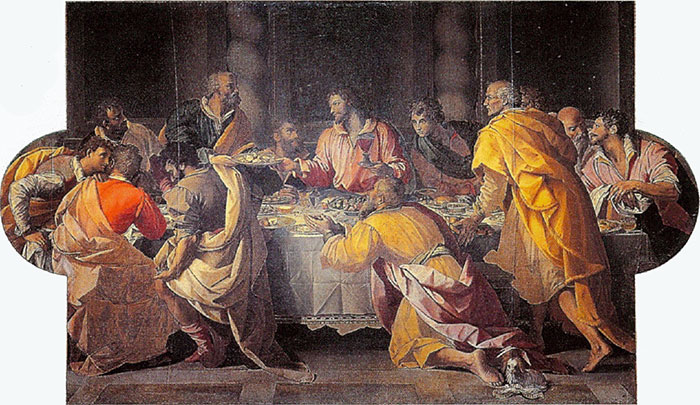 |
Alessandro Allori, Last Supper, 1584, oil on canvas, old Refectory of the Convent, Basilica di Santa Maria Novella, Firenze
|
Dit levendige Laatste Avondmaal van Allori, geschilderd tussen 1584 en 1597, bevindt zich in de Basilica di Santa Maria Novella.
Het paneel in het midden onderaan het fresco is eigenlijk een doek waarop Allori een visie van een energiek en fysiek actief Laatste Avondmaal heeft gecreëerd.
Alessandro Allori (1535-1607), Florentijns schilder, leerling en aangenomen zoon van Bronzino. Een vroeg bezoek aan Rome voegde de invloed van de late schilderijen van Michelangelo toe aan die van het hoofse maniërisme van zijn meester. De parelvissers (Studiolo van Francesco I, Palazzo Vecchio, Florence, ca. 1570) wordt over het algemeen beschouwd als zijn meesterwerk; speels en vol kunstgrepen combineert het naaktfiguren die duidelijk zijn ontleend aan Michelangelo met Bronzino's slanke en geëmailleerde kleuren. Hij was een van de laatste opmerkelijke exponenten van het maniërisme en schilderde in een stijl die tegen de tijd van zijn dood verouderd was.
Allori's unieke werk diende als inspiratie voor andere kunstenaars aan het einde van de 16e eeuw om te experimenteren met nieuwe kunststijlen. Dit is de laatste afbeelding van het Laatste Avondmaal in een Florentijnse kerk.
Adres: | Basilica of Santa Maria Novella, Piazza di Santa Maria Novella, 18, 50123 Firenze
Openingsuren : Monday, Thursday, Saturday, Sunday 10am-4pm
Weekday holidays 9am-2pm
|
| |
|
|
|
|
| |
|
Chronologie
Cenacolo di Santa Croce, Museo dell'Opera di Santa Croce, piazza Santa Croce, piazza Santa Croce, Taddeo Gaddi's Last Supper (about 1340).
Cenacolo of Santo Spirito, Ancient Refectory of Santo Spirito, Museo della Fondazione Romano, piazza Santo Spirito, fragment of the Last Supper of Andrea di Cione, called Orcagna (about 1370).
Cenacolo of Sant'Apollonia, Museo del Cenacolo di Sant'Apollonia, via XVII Aprile n. 1, Andrea Del Castagno's Last Supper of (about 1450).
Cenacolo of Ognissanti, Cenacolo del Ghirlandaio, via Borgognissanti, 42, the Last Supper of Domenico Bigordi, called Ghirlandaio (about 1480).
Cenacolo of San Marco, refectory of the ex guest-room, 1, piazza San Marco, Ghirlandaio's Last Supper (about 1482).
Cenacolo of Fuligno, Museo dell'ex Conservatorio di Sant'Onofrio, or of Fuligno, via Faenza n. 42, Last Supper of Pietro Vannucci, called Perugino, and workshop (about 1495).
Cenacolo "della" Calza, Convento della Calza, piazza della Calza n. 6, Ultima Cena Last Supper of Francesco di Cristofano, called Franciabigio (1514).
Cenacolo of San Salvi, monastery of San Michele in San Salvi, museum of the cenacolo di San Salvi, 16, via di San Salvi, Andrea del Sarto's Last Supper (1527)
Cenacolo Santa Croce, museum van de Santa Croce, Piazza di Santa Croce, 30/15, Vasari's Laatse Avondmaal
Cenacolo di Santa Maria del Carmine, 1582, Alessandro Allori

Art in Tuscany | Domenice Ghirlandaio, Last Supper frescoes
Art in Tuscany | Fra Angelico | Frescoes in the Convento di San Marco (1438-50)
Paolo Morachiello, Fra Angelico: The San Marco Frescoes, Museo Di San Marco, Thames & Hudson, 1996.
Eva Maria Lundin, Andrea del Castagno's Last Supper | www.athenaeum.libs.uga.edu]

[1] Photo by Sailko, CC BY-SA 3.0, Collegamento
[2] Zie ook LEONARDO DA VINCI | Het Laatste Avondmaal, beroemd en tragisch bedreigd kunstwerk
[3] Foto particolare del cenacolo di Santa Croce, di G41rn8 - Opera propria, CC BY-SA 4.0, Collegamento
|

|
|
|
 |
|
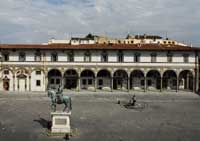 |
|
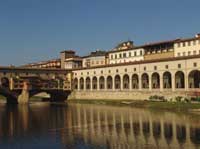 |
| |
|
Churches in Firenze |
|
Le piazze di Firenze | Squares in Firenze
|
|
Galleria degi Uffizi |
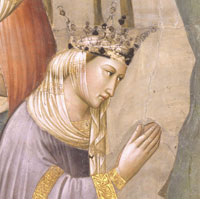 |
|
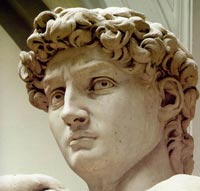 |
|
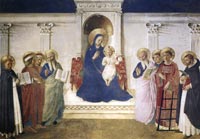 |
Agnolo Gaddi, The Legend of the True Cross, (detail, the Queen of Sheba), Cappella Maggiore, Basilica di Santa Croce,
|
|
Galleria dell'Accademia
|
|
Fra Angelico, Sacra Conversazione, c. 1443, fresco, 195 x 273 cm, Convento di San Marco, Firenze
|
| |
|
|
|
|
|
|
|
|
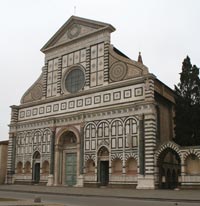
|
Ognidanti |
|
Santa Marina al Monte
|
|
|
| |
|
|
|
|
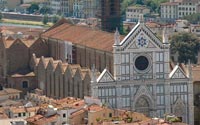 |
|
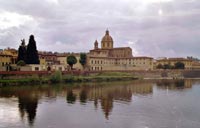 |
|
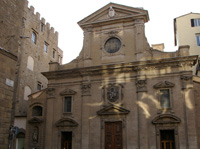 |
Certosa del Galluzzo (Firenze) |
|
Santa Maria del Carmine |
|
Santa Trinità |
|
|
|
|
|
|
|